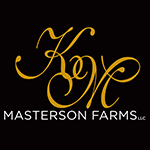Equestrians are continually learning from horses, other riders, and various styles of riding. Any successful horseman will tell you that they never stop learning; it is an ongoing process. Every discipline in the equine world has something to offer. For example, vital elements of dressage may help a rider develop a secure seat that will be beneficial in a barrel racing arena.
Even though styles of riding vary, many foundational elements can be found across the board. Recognizing the critical takeaways from different riding styles can significantly improve an equestrian’s abilities. This also creates the realization that equestrians, no matter the discipline, are more alike than different.
Dressage
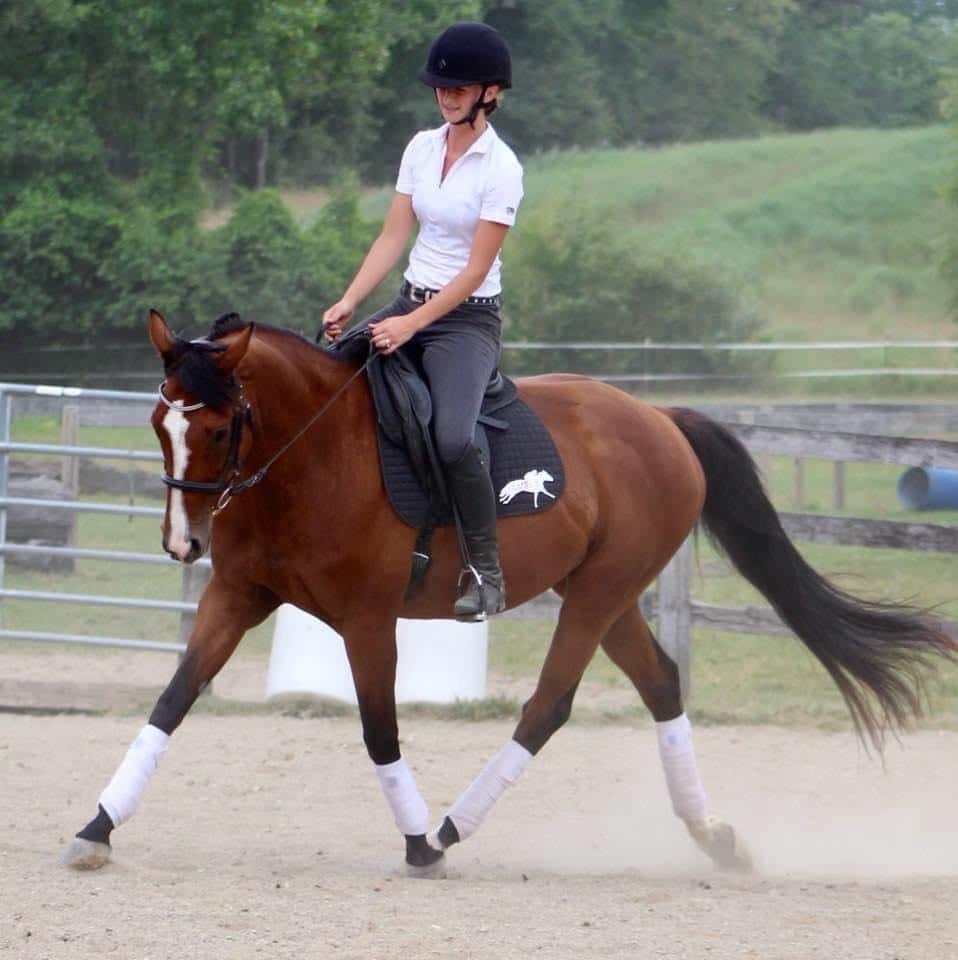 Dressage teaches a rider, among other things, to ride with a strong seat. The entire discipline rests on the connection between horse and rider. Heather Dufour, a decorated dressage rider, comments, “The main takeaway that any equestrian can learn from dressage is that it’s between the horse and rider, nobody else. The beauty of competing in the sport of dressage is that you enter the show ring to compete against yourself. You are looking for a percentage, not a placing.”
Dressage teaches a rider, among other things, to ride with a strong seat. The entire discipline rests on the connection between horse and rider. Heather Dufour, a decorated dressage rider, comments, “The main takeaway that any equestrian can learn from dressage is that it’s between the horse and rider, nobody else. The beauty of competing in the sport of dressage is that you enter the show ring to compete against yourself. You are looking for a percentage, not a placing.”
The foundational elements of dressage are universally helpful in the equine community. Dufour adds, “The meaning of the word ‘dressage’ is training. Aside from being able to perform beautiful, elegant movements, the goal is to be able to help your horse improves their balance, muscle tone, and overall enhance the longevity of their riding career if done thoughtfully.”
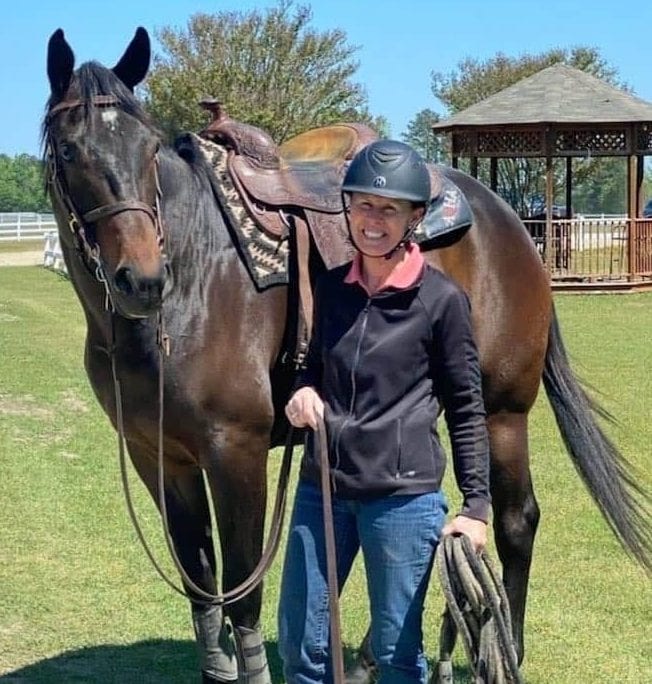 Another useful tool is the dressage pyramid of training. Dufour explains, “The dressage pyramid of training gives a clear technical picture of what the foundation builds up to.
Another useful tool is the dressage pyramid of training. Dufour explains, “The dressage pyramid of training gives a clear technical picture of what the foundation builds up to.
Starting with rhythm at the base, relaxation, connection, impulsion, straightness, and then collection. If any of the steps are missed, there will be holes within the training.”
AQHA Judge, Carla Wennberg, comments about Western Dressage, “AQHA just approved Western Dressage as an affiliate. I see it as a great cross over for anyone who loves pattern classes as I do. It is a longer pattern than the hunt seat equitation or horsemanship, but layout, correctness, and balance foremost.”
Jumping
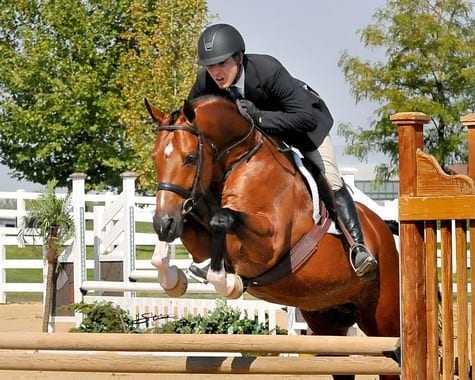 Jumping is a popular style of riding that requires a secure connection between horse and rider. There is a lot of trust that goes into asking 1200-pound animals to jump over obstacles. Jumpers are strong, brave, and not afraid to take risks.
Jumping is a popular style of riding that requires a secure connection between horse and rider. There is a lot of trust that goes into asking 1200-pound animals to jump over obstacles. Jumpers are strong, brave, and not afraid to take risks.
Multiple AQHA World and Congress champion, Lainie DeBoer, comments, “My foundation for jumping starts with building solid flatwork that compliments my jumping. My horses must have balance, the ability to lengthen and collect, lateral work moving away from both of my legs with forward movement equally on each side, and free-flowing movement with a soft mouth that accepts my hand. I like my horses to have a happy expression and look relaxed while going around a course comfortably and quietly, listening to me along the way.”
Do you know the saying, “Happy wife, happy life”? Well, the same goes for horses. “Happy horse, happy life” is an excellent mindset that will make your days in the barn much more enjoyable. Jumping requires the horse to be willing to do their job. Therefore their happiness is of utmost importance.
DeBoer adds, “I think the main take away would be that you need to first and foremost be your horse’s advocate. They can’t talk, so it’s your job to figure out what they are saying and what their needs are.”
Trail Riding
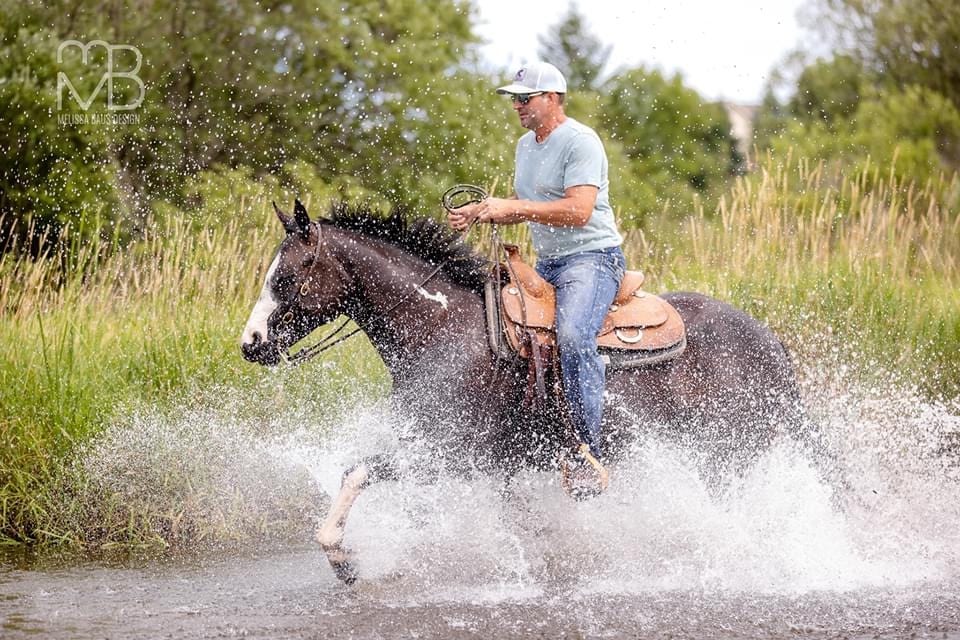 All equestrians can learn an immense amount from trail riding. Some people trail ride for leisure, and others may compete in it. The most important takeaway from avid trail riders is their enjoyment of the sport. They take time to step back and smell the roses.
All equestrians can learn an immense amount from trail riding. Some people trail ride for leisure, and others may compete in it. The most important takeaway from avid trail riders is their enjoyment of the sport. They take time to step back and smell the roses.
Every competitor can benefit from a relaxing trail ride. This allows reconnecting with the enjoyment of simply riding. Far too often, individuals become wrapped up in the trophies, ribbons, and titles that they forget about their roots. Trail riding is a beautiful way to reconnect with your passion.
Successful barrel racing competitor, Emma Charleston, adds, “Simply just ride your horse to gather cattle on, or even ride in the pasture. It will do you and your horse better than the arena ever will.”
Western Pleasure
 When some equestrians think of western pleasure, they think of slow movement and flashy clothes. This discipline teaches much more than “go slow.” Riders need to have a solid understanding of how their horse is built. Multiple AQHA and Congress Champion Exhibitor Hillary Roberts comments, “I’ve learned that the key is understanding the mechanics of a horse’s body. It is a lot like physics – each action or cue you give a horse will get a reaction from him. The better you understand how a horse is made and which parts do what, the easier it will be for you to put your horse in the ideal position to do his job.”
When some equestrians think of western pleasure, they think of slow movement and flashy clothes. This discipline teaches much more than “go slow.” Riders need to have a solid understanding of how their horse is built. Multiple AQHA and Congress Champion Exhibitor Hillary Roberts comments, “I’ve learned that the key is understanding the mechanics of a horse’s body. It is a lot like physics – each action or cue you give a horse will get a reaction from him. The better you understand how a horse is made and which parts do what, the easier it will be for you to put your horse in the ideal position to do his job.”
Western pleasure teaches the rider to understand how each action triggers a reaction from the horse. By tuning into this sensitivity, an equestrian can learn how to improve their horse’s cadence.
Roberts concludes, “The western pleasure has taught me the most about how to break a horse down into individual parts to teach him or fix an issue.
Reining
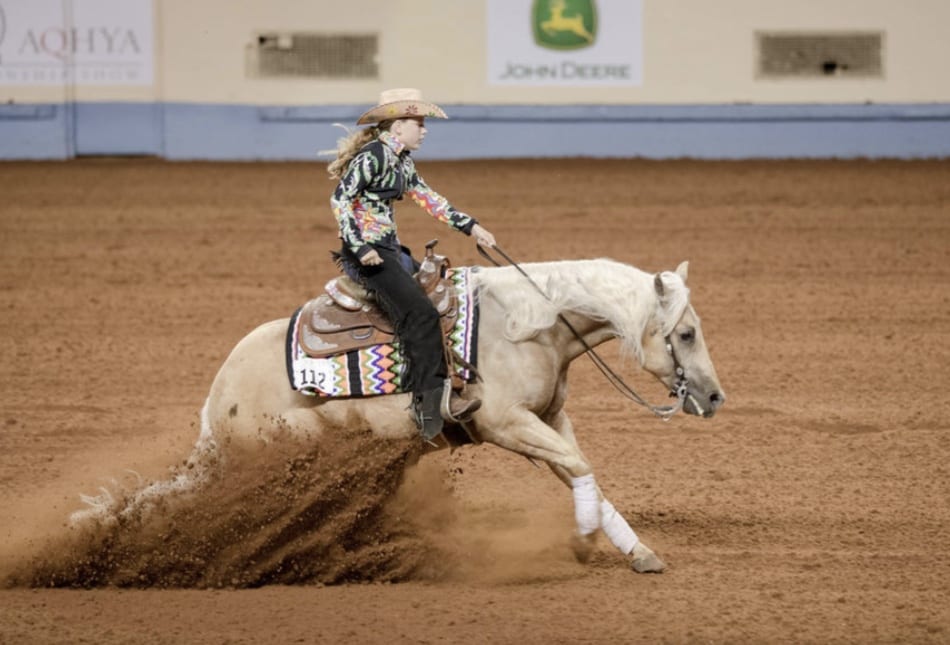 Reining is fun and exciting for both rider and the audience watching. Big fast circles, sliding stops, and turns at the speed of lightning are just a few of the many maneuvers that reiners master. Many intricate details go into a successful reining duo.
Reining is fun and exciting for both rider and the audience watching. Big fast circles, sliding stops, and turns at the speed of lightning are just a few of the many maneuvers that reiners master. Many intricate details go into a successful reining duo.
NCEA Equestrian Lisa Bricker, comments, “The foundation of reining has remained the same as NRHA has set and provided patterns and rules for everyone to follow. Reining stands on the foundations of horse and rider having fun and competing against challenging competition. The goal is to limit stress on horses and desire the natural flow throughout the pattern.”
The small details in reining are essential. Riders must be in sync with their horse when facing such intense patterns and competition. Bricker says, “The reality behind reining and showing, in general, is that when in the arena it is the rider and horse team versus the pattern. The pattern is the largest competitor for any rider to go against as there are multiple areas in which small errors might occur that could result in the score difference between first and second.”
Barrel Racing
 Barrel racing is a favorite for many competitors and audiences. The thrill of a race against the clock resonates with many equestrians. Riders must be strategic and brave to compete in such a fast-paced event.
Barrel racing is a favorite for many competitors and audiences. The thrill of a race against the clock resonates with many equestrians. Riders must be strategic and brave to compete in such a fast-paced event.
Barrel racing trainer at Abbott Equine, Emma Abbot says, “I try very hard to keep my horses happy. My program is very diverse; I do not think one way of training always works for every horse. I think in this sport, it is crucial to be open-minded and figure out how each horse learns and can progress. The horse must be balanced to have the potential to be a winner.”
Happy, well-balanced horses are a foundational element of a successful barrel racing team. Riders need to be connected to their horse and understand that winning roots from a solid relationship with their horses.
***
Actor, director, and martial arts enthusiast Bruce Lee once said, “Learning is a constant process of discovery – a process without end.”
The beauty of examining different styles of riding is realizing that these foundational elements are universally beneficial. There is always something to learn from each person you meet, both in the real world and the equine community.
DeBoer perfectly concludes, “You need to keep learning and always ask for help. I constantly study videos of horse competitions that are at the top end of my industry. I read articles in magazines about ways other people train. I reach out to people that are incredible horsemen that I look up to and pick their brains or get lessons. You can never stop learning.”




